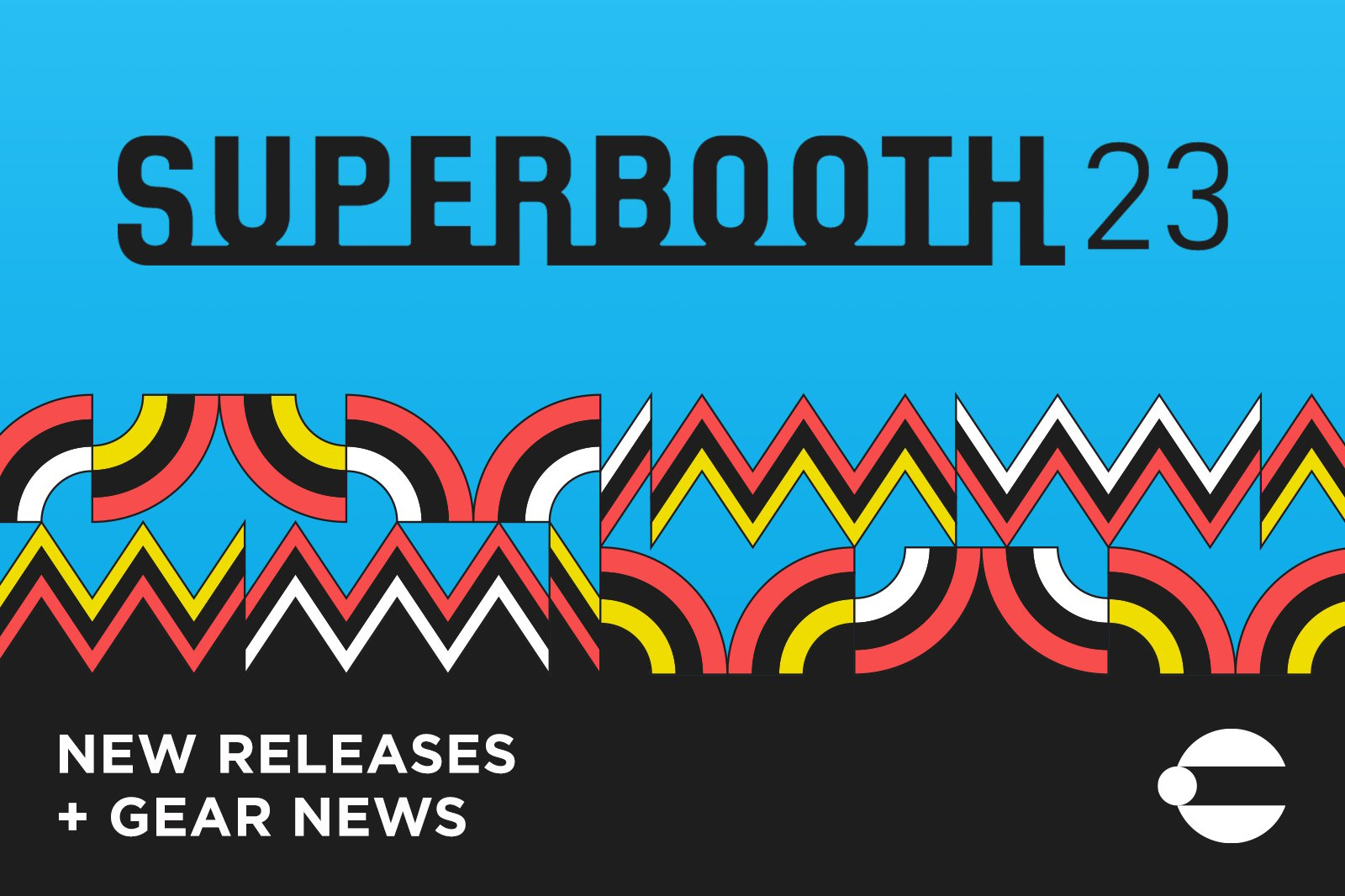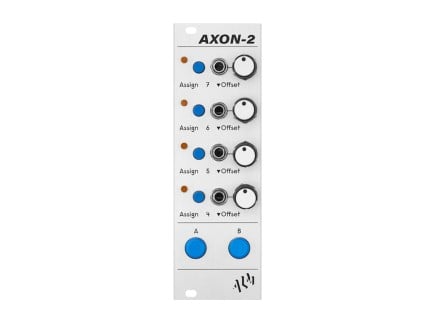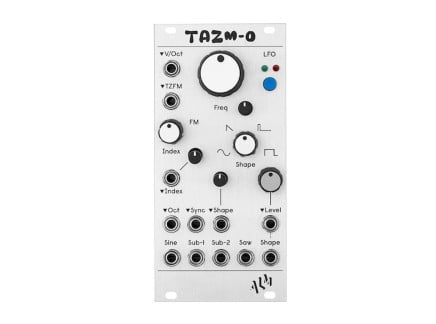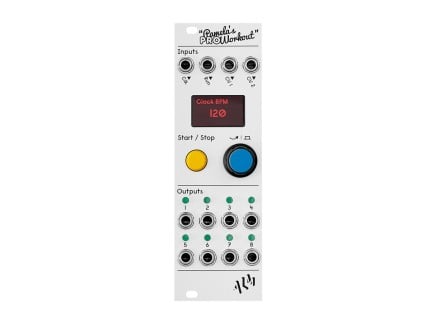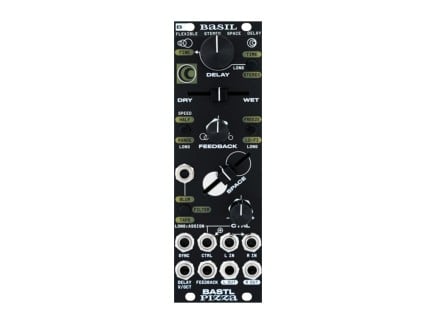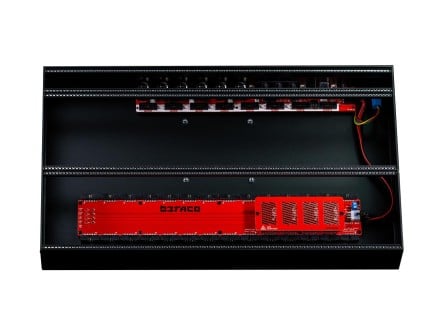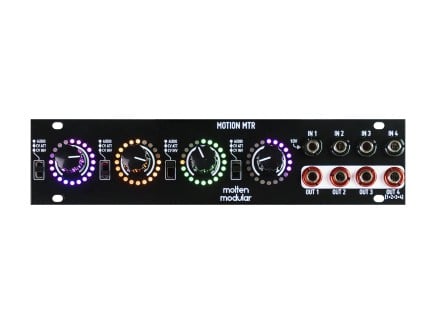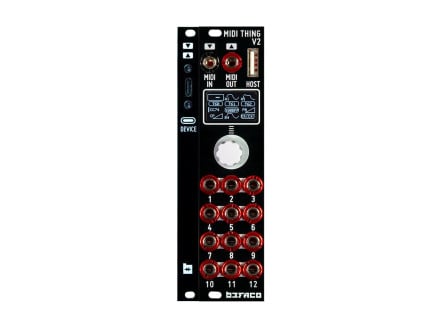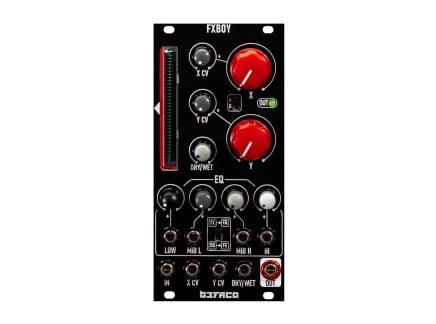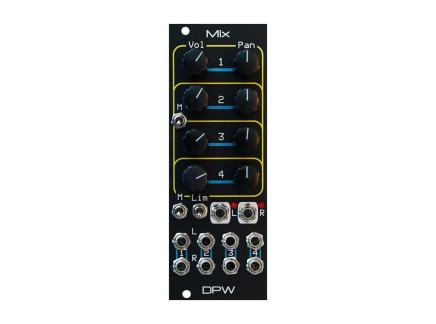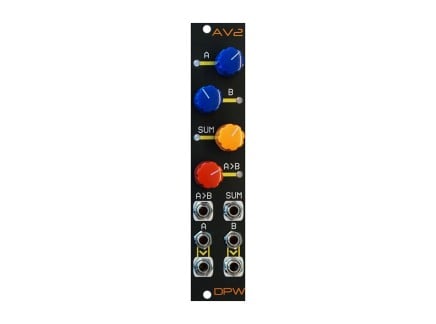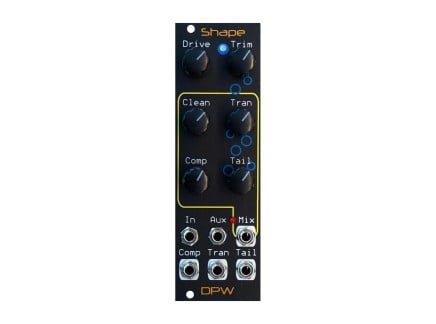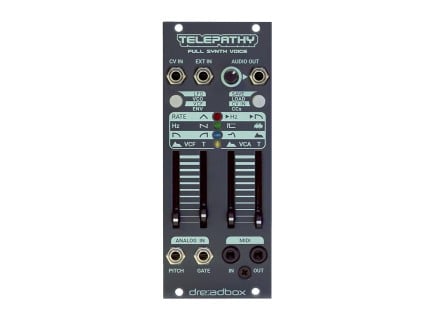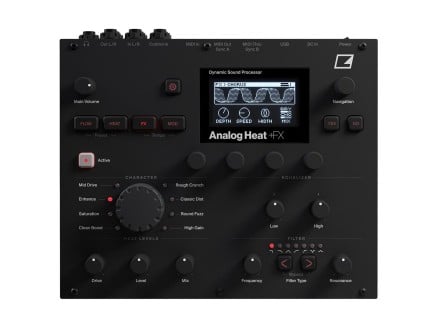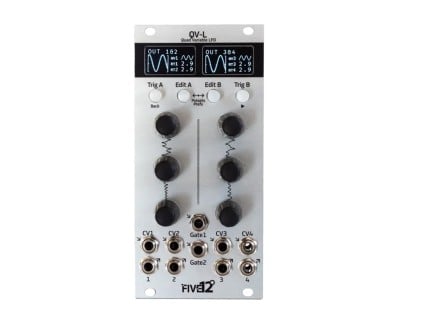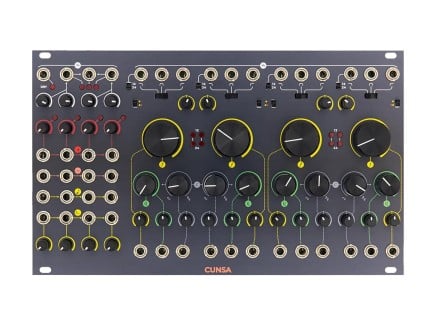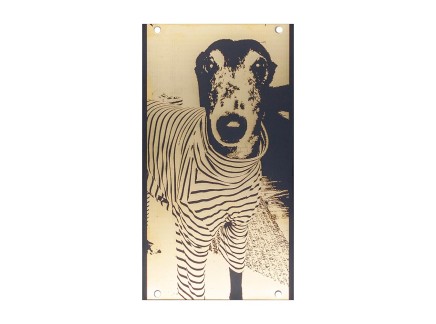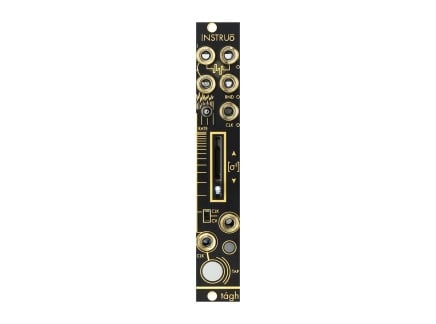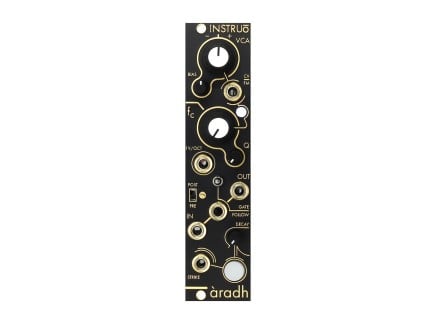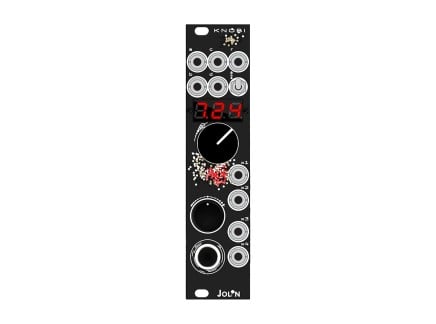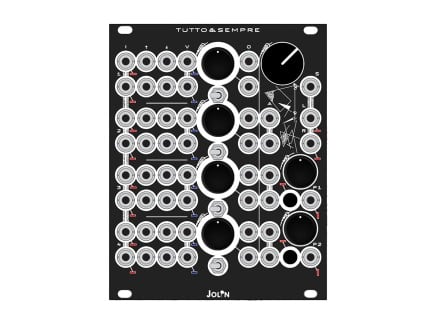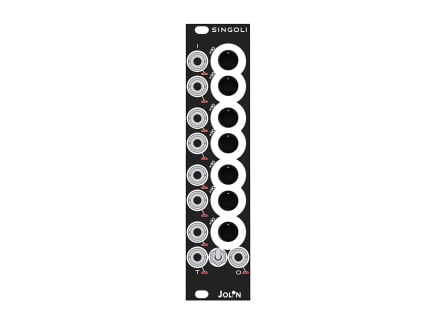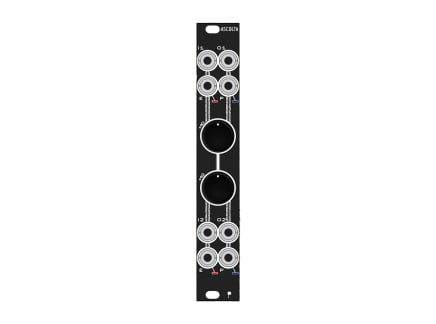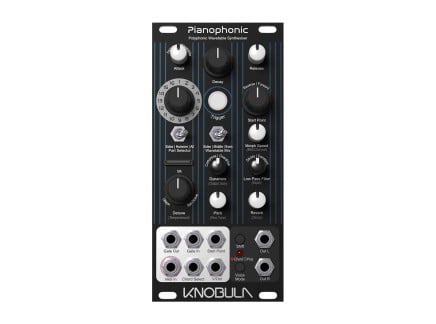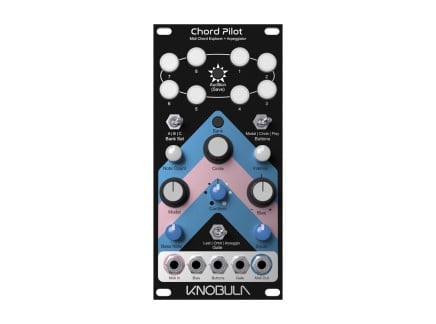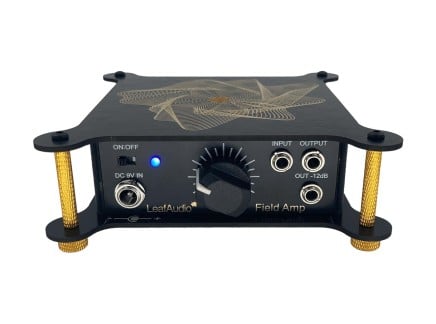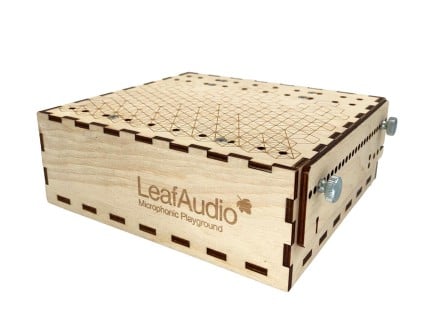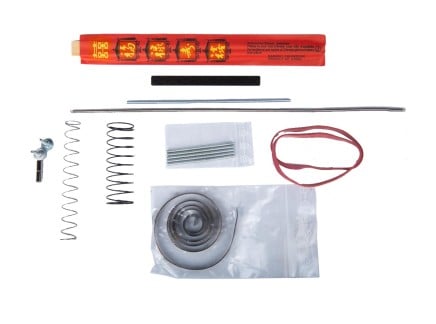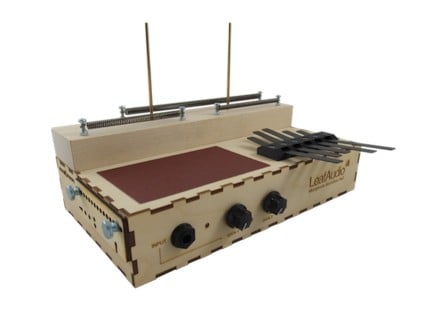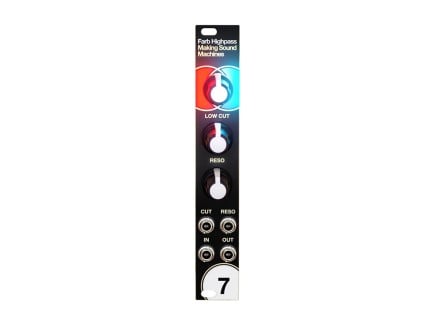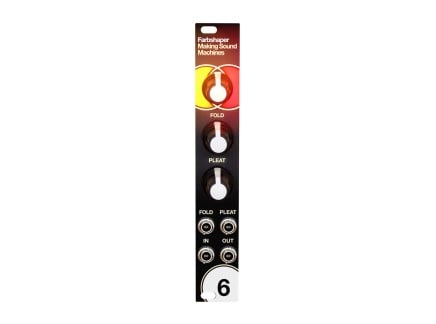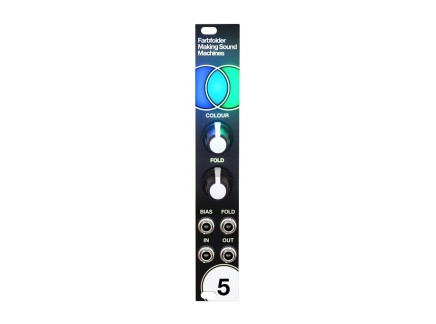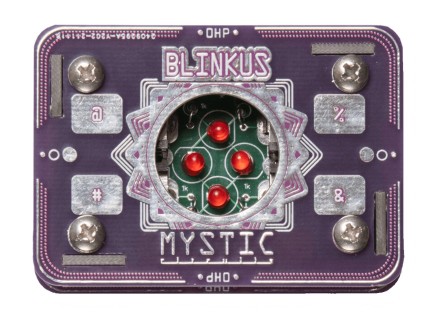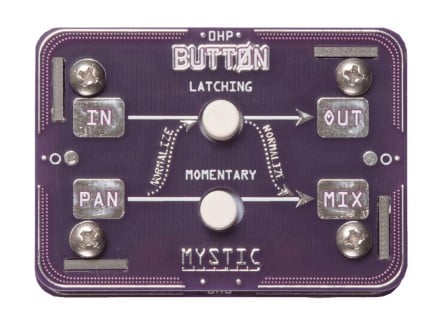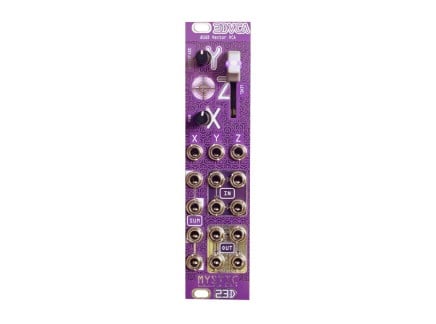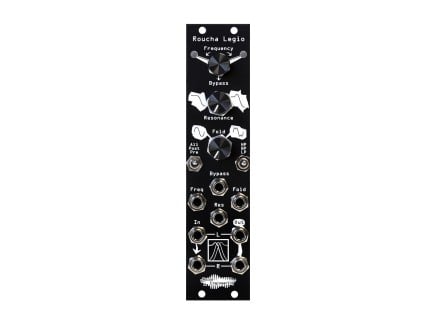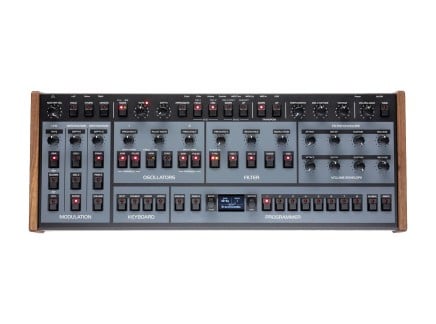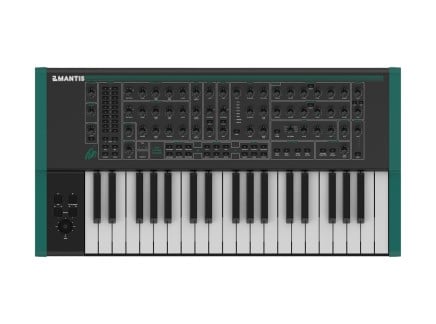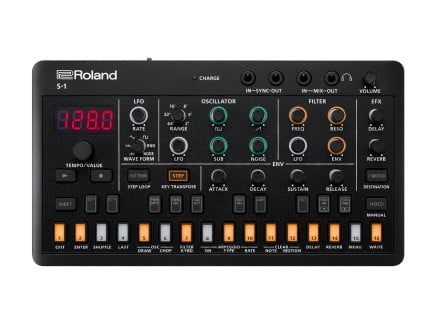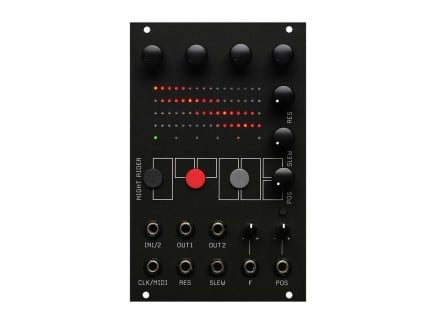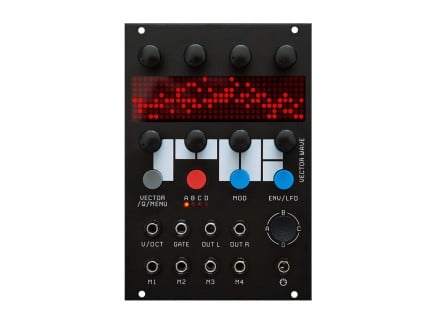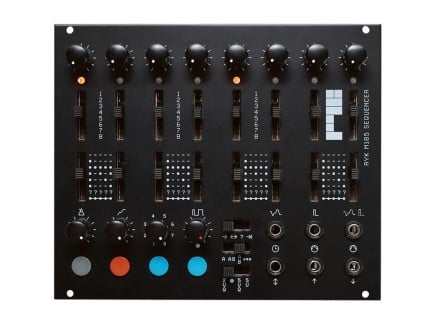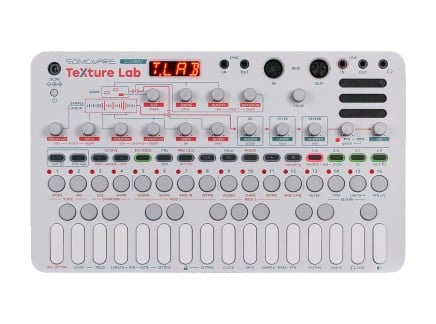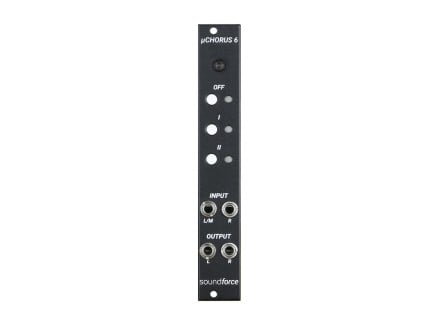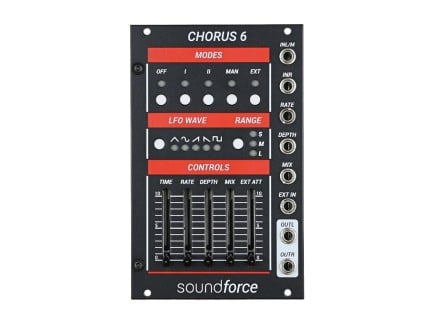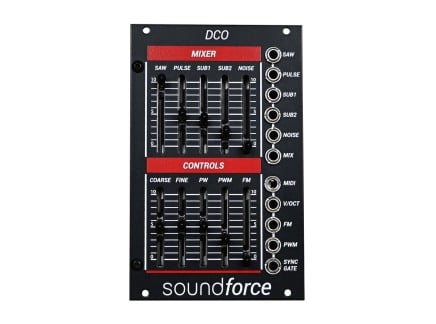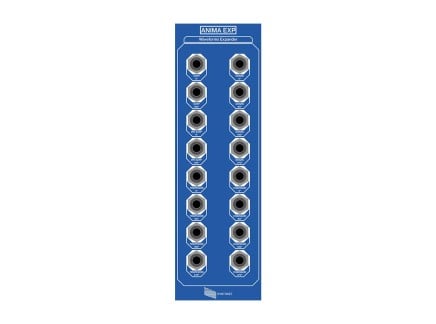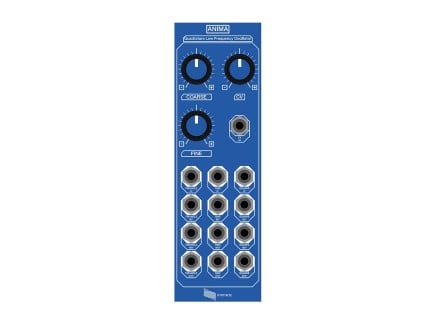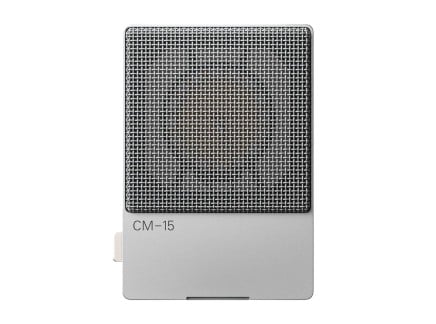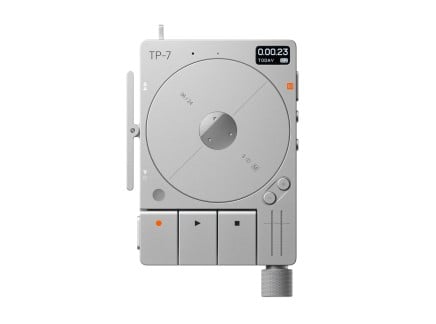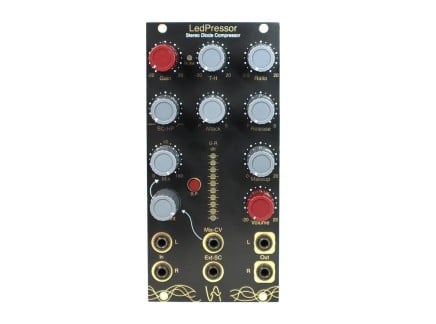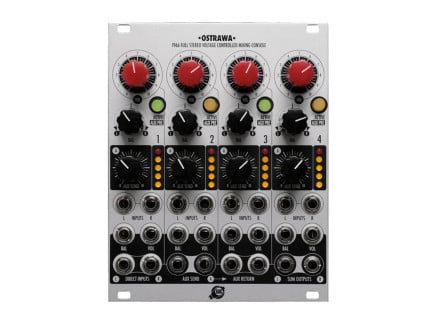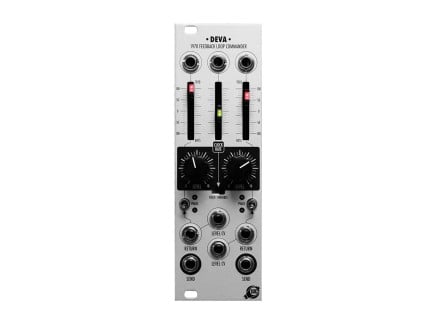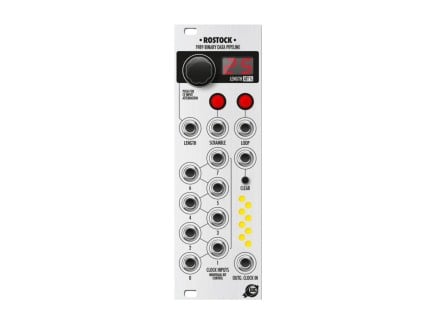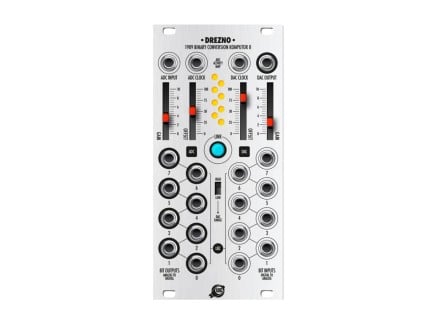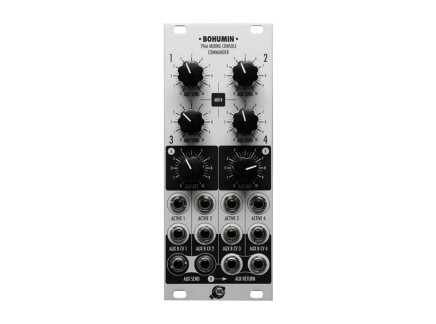Get ready, folks! It's that time of year again when Superbooth takes over Berlin, and let me tell you, it's a wild ride. The most brilliant minds in electronic musical instrument design are coming together to showcase their latest and greatest creations, from mind-blowing Eurorack modules to futuristic drum machines, effect processors, and so much more. It's a feast for the senses, and we're here to bring you all the juicy details.
Every year, Superbooth delivers a ton of exciting new gear, and this year is no exception. We're on the ground, soaking up all the musical goodness, and we'll be bringing you updates on the hottest releases, even from the designers who couldn't make it to the event. So sit back, relax, and keep your eyes glued to this article for all the latest and greatest gear updates.
Trust us, you don't want to miss out on this. Here's a sneak peek at what we've discovered so far.
4MS Sampler + Looping Delay
Also showing off products first shown at NAMM, 4ms Company brings their new Sampler and Looping Delay modules to Berlin. A nice point for both of these modules is that they're not only available as fully assembled products, but 4ms will also directly offer DIY kits for those who enjoy building modules themselves.
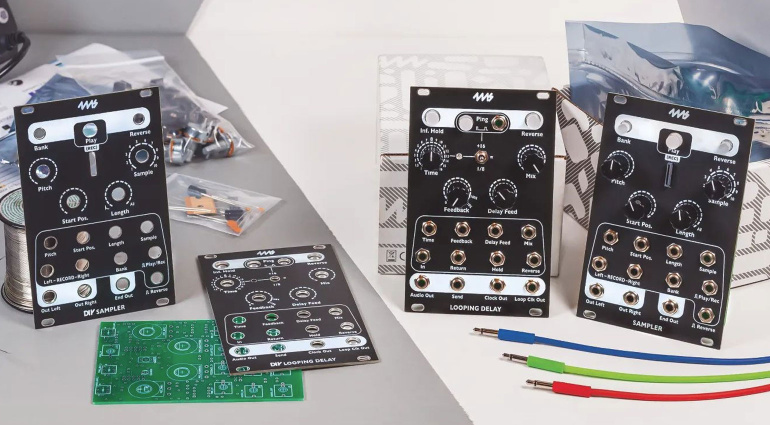
Looping Delay, based on the larger Dual Looping Delay (DLD), is a mono, clockable delay with abundant versatility. Delay times extend up to a whopping 87 seconds, but Looping Delay can operate fast enough for comb filtering and karplus-strong synthesis. Of course, it works great in between these extremes for tempo-synced echoes and looping. It also plays nicely with other pieces of a modular system, offering a send and return path for the feedback loop as well as clock outputs for syncing sequencers and other modules to your delay time, rather than the other way around.
Also derived from an existing module, Sampler is a single-channel version of the Stereo Triggered Sampler (STS), but still offers stereo playback and recording. The included SD card offers an abundance of curated samples from artists, but of course, your own modular rig and sample collection can put your own sounds at its disposal. A total of 600 samples across 60 banks of ten samples gives you plenty to work with, and the files themselves may be up to 4GB in size (which is a lot—six hours at 44.1kHz/16-bit!).
Sampler offers plenty of ways to manipulate recorded sounds, leading to a number of glitchy or pseudo-granular possibilities. Transpose the pitch, shift the Start Position, change the playback Length, and even jump through the samples in the current bank—this can all be done manually or with control voltage. Sampler puts tactile and dynamic means of manipulating your sounds under any and all of your preferred methods of control.
Both modules are expected for release in summer 2023—Looping Delay retails for $275 full assembled, and Sampler will be $299.
AJH Synth MiniMod Keys + Triple Cross
Filling a NiftyKEYZ to the brim with their modules, AJH's largest offering this year is the MiniMod Keys, a Eurorack reimagining of the classic Model D. Using three AJH Transistor Core VCOs, a Glide Noise, Ring SM, Transistor Ladder Filter, a Low Fat VCF, Discrete Cascaded VCA, Dual Contour Generator, and Tap Tempo VC-LFO, this sounds huge and offers all the features you'd expect from the NiftyKEYZ. They also replaced the stock wooden cheeks with a more vintage-looking dark walnut.
Collaborations are the theme for AJH, as they also brought their Triple Cross module, which is a collaboration with Tone Science/Ian Boddy designed to recreate his own Serge patch from decades ago. The Triple Cross is a three channel crossfader, paneer, or linear VCA that features stereo ins and outs. These can be combined in several ways to augment audio or CV signals in creative ways.
ALM Busy Circuits TAZM-O + Axon-2
If you haven't heard the news, ALM has been celebrating their ten-year anniversary this year. And even after releasing the latest and greatest version of Pamela's Workout in late 2022, they've shown no signs of slowing down as they celebrate. If anything, they're unveiling module after module to extend an already wide-ranging catalog of products. ALM recently announced the availability of two new modules during their week-long London pop-up shop: TAZM-O and AXON-2.
TAZM-O is ALM's first analog oscillator design, and it manages to offer both straightforward utility and some neat and desirable features for modern Eurorack oscillators. A triangle oscillator core supporting through-zero FM, a morphing waveform output, two sub-oscillators, and LFO operation, TAZM-O is thoroughly capable and versatile. There's even a handy CV input for octave transposition, allowing you to dynamically shift TAZM-O from a singing melody to a low bass.

To further extend their ecosystem of expandable modules, ALM developed Axon-2. Compatible with Squid Salmple, MFX, and Pam's Pro Workout, the new Axon behaves similarly to the original Axon-1, but with a couple of additional features. Notably, each channel provides its own offset control, eliminating the requirement for an external voltage source if you're only looking for additional manual control. ALM also added two push buttons at the bottom, offering different functionality depending on the module Axon-2 is connected to.
Axon-2 and TAZM-O are both available for order now.
Alter Audio Eurorack Timetosser Prototype
In addition to showing off a new firmware for their Timetosser desktop audio sampler and slicer, Alter Audio has arrived at Superbooth with an intriguing prototype: a Eurorack version of Timetosser.

Like the desktop version, the Eurorack Timetosser is a live performance tool designed to loop and slice audio in real-time. 16 central keys serve as the primary interface for interacting with your sound, allowing you to glitch, loop, and beat-repeat snippets of audio at an instant. Of course, as a Eurorack module, this version features 3.5mm jacks along the top of the panel to interface with a modular system. There's stereo audio input and output, TRS Type-B MIDI input and output, and even some select CV and gate inputs for integrating sequencers and other modules into the Timetosser's audio buffer madness.
Making an instantly Eurorack-compatible version of the Timetosser would be exciting enough for most people, but there's one detail that particularly captured our attention. The audio inputs and outputs are DC-coupled, meaning that Timetosser can process control voltages too! Run a sequence through its buffer to loop and glitch pitches, capture a snippet of a random voltage stream—there's no shortage of exciting ways that Timetosser could be used to manipulate CV.
Timetosser's Eurorack version is still in the early stages of prototyping, but we're sure that after Superbooth, Alter Audio will return to their labs filled with motivation and inspiration.
AMMT Synthesis + WMD
WMD has slowly been winding down its production, however, just like the phoenix, they will rise from the ashes. As mentioned in our interview with William Mathewson, several of the modules will actually be returning with a new design, new version, or both under the reborn WMD brand, or a new company AMMT Synthesis. At SuperBooth they are showing a prototype hi-hat module that uses samples to create percussive sounds—not limited to hi-hat sounds, to those who like to experiment.

A Mk III version of the WMD Digital VCA is also on display and features a new 0 crossing detector to provide clickless operation even with the fastest envelopes. The belle-of-the-ball is the newest version of the beloved Performance Mixer, now with easily replaceable faders, clickless mute buttons and a full patchable stereo bus. The bus features a set of buttons that let you group, cue and route in real time, plus the two aux sends are now simultaneously available to all channels.
The new company AMMT (pronounced "amped") is co-owned by Alex Anderson, William Mathewson, Mason Malvinni, and Matt Tanner—all of whom were involved in the development of WMD's own product lines for the last several years. AMMT was formed as a way of giving the past WMD design team greater control, stakes, and agency over their designs. In addition to the aforementioned new digital hi-hat module, AMMT will soon resume production of the WMD digital drum modules (Crucible, Chimera, Crater, etc.), as well as the Metron and Voltera. These modules will all be functionally equivalent to the WMD originals, but will bear a new cosmetic design—exemplified by the prototype AMMT Metron, pictured below.

This new phase for the WMD team as AMMT has us giddy for the future and we can't wait to hear what comes up next. A couple of key modules will likely be released this summer, but otherwise, all modules are expected for release late 2023 and onward. Again, if you want to learn more about WMD's rebirth and the formation of AMMT, we strongly recommend checking out our recent exclusive interview with WMD founder William Mathewson, in which he explains quite deeply how this all came to be.
Animal Factory New Pedals + Synths
Animal Factory showed off what they've been working on for the past few years, and it amounts to 5 pedals and a unique East/West Indian Coast synth. Starting with that last one, not too much is known at this time, but it appears to be a standalone touch plate synth that gives a generous nod to their hometown of Bombay, India. The pedals are several types of updates to their fuzzs, overdrives, along with a liquid phaser.
Chemical Burn V3, Baron Samedi V2, Pit Viper V3, and Godeater V3 all get a facelift, ready to annihilate your sound in a pleasant way. Their new offering is the Aphasia, an 8-stage phaser that is designed to be liquidy and features two LFOs for interesting modulation options. Animal Factory creates some great fuzzes, and we can't wait to get our hands on these.
AtoVproject Dual Harmonic Oscillator
AtoVproject comes to SuperBooth with a large Dual Harmonic Oscillator that sounds incredible. Using two oscillators with each having 4 different H adjustment knobs, this is going to be a gnarly, epic oscillator. No known price or release date (at the time of writing) is known but this is sure to be a great centerpiece for any rack.

Not limited to external sources, the DHO has internal LFOs for modulation and each oscillator has its own VCA. The knobs even have a haptic feedback built in to make the experience extra luscious. On top of all that, there is a built in wavefolder to absolutely crush your session or performance.
Bastl Basil
BASTL already announced their successor to the Dude with the Bestie, but they also bring their new stereo delay based on the Pizza hardware, Basil. Offering exceptionally clean audio when you want it or lofi grit, you can even get chorus, pitch shifting, vibrato, and reverb effects with just a few tweaks and patching. You can even turn the delay time with 1v/oct CV to create a Karplus-Strong voice.
A full featured delay, you can have the clock run normally, which gives you 44.1/16-bit sound and up to 500ms of delay, or it can drop to half-speed for a full second of delay in stereo. The Lo-fi setting turns off the anti-aliasing filter letting all the beautiful artifacts come through. Space gives you several options to add ambient washes, extra taps to the delay line, or a filter to the feedback path. Basil is compact and performative, easily one of the highlights in your case.
Basil can be preordered now, and is expected to ship soon! For those who already own a Pizza, Basil's firmware can easily be flashed to give it a try before you buy.
Befaco Modules + 7U Case
The fine folks at Befaco have brought a handful of new modules with them to Superbooth, as well as their first Eurorack case design. Collectively it's an impressive mix of novel concepts and practical feature sets, not to mention a healthy dash of nostalgia for retro handheld gamers.
Let's start with that case: Befaco's 7U Case is packed full of features and an incredibly generous power supply. The Intellijel-format 1U row is able to be installed either as an outer row or in the middle of the case, making it ergonomically viable for any collection of 1U modules. Additionally, there are a whopping six bi-directional 1/4" jacks on Befaco's case, meaning that you can easily establish stereo input, output, effects send/return, or any combination of the above. For studio use, this case is even Vesa mount compatible, but it does include a protective PET-G cover for stashing it away in a bag when it comes time to travel.
Among Befaco's new modules, the one bringing a smile to so many faces is the clever FX Boy. It's a cartridge-based multi-effects processor that uses Game Boy-style cartridges to recall different types of effects. And in the spirit of Eurorack modular, the six included carts are from different designers: Befaco, Feedback, Making Sound Machines, Tesseract, Towel Skouarn, and XOR Electronics. Each cartridge itself contains two different types of effects eahc with two voltage-controllable parameters, plus a four-band EQ built into the module that can be used on any effect.
On the more utilitarian side of things, Befaco is presenting a new version of their MIDI-CV converter: MIDI Thing 2. Adopting the configurable approach found in their CV Thing, MIDI Thing 2 is a do-it-all MIDI-CV converter that can even host a MIDI controller on its USB port. There's also a 1U version of their Molten Modular Motion MTR, the super flexible audio and CV utility designed with Robin Vincent.
All of these new Befaco products are expected to be available beginning in June.
Black Corporation Expander Mk2
Black Corporation has made some incredible desktop synths that recreate classic synths in a smaller size. This year at SuperBooth, they debuted their effects processor and it is an absolute unit. The Expander Mk2 is a tabletop or 6U rack mountable device that offers delay, reverb, phaser, ring mod, resonator, chorus, overdrive, and a routing matrix that lets you customize your signal chain.
Designed for studio or live use, two 1/4" inputs and outputs are available on the back with a stereo send/return, a DB25 breakout for connecting to a patchbay, and a Hi-Z input on the front for guitars and basses. Each of the effects have selectable options—with delay having a digital and analog patch, reverb boasting a Meris-designed digital reverb and spring with two physical, 17" springs mounted in the devices, a Phaser that uses optical (Lamp) or OTA circuitry, and the modulator can be a ring mod or four quad multiplier.
This is one of the most impressive devices for effects processing we've seen, and if you're familiar with Black Corporation, you know they mean business. Expander Mk2's planned shipping date is early 2024.
Buchla USA Music Easel + Limited Edition
Buchla USA is back at Superbooth this year, once again showing their new take on Don Buchla's Music Easel. There were very few original Music Easels made in the 1970s. It was a synth-in-a-suitcase style design, containing two modules: a 218 Touch Activated Voltage Source (a type of capacitive keyboard), and a 208 Stored Program Sound Source (the "voice" module). In the last fifteen years or so, the Easel has gained something of a cult following, and it was reissued with a number of changes in 2013 by the company Buchla Electronic Musical Instruments. Ultimately, production of BEMI's Buchla-derived designs was passed along to the new company Buchla USA—who quickly discontinued the Easel as they prepared a new, redesigned version of both the 208 voice module and 218 keyboard.
In the past few years, new developments in Buchla USA's Easel ecosystem have been released incrementally. The 208c Easel Command presented an altered version of the Music Easel's voice module as a standalone desktop unit, complete with MIDI input. Subsequently, the recently-released LEM218 V3 adapted the 218 into a quite capable CV controller and polyphonic MIDI controller. Now, with the 208c and 218e V3 complete, the last step was to build a suitcase in order to introduce a new iteration of the Music Easel.
This shouldn't come as a surprise; Buchla USA has shown some version of a new Easel since Superbooth 2021. Today, we're seeing what seems to be the final version: a 208c and 218e V3 in a 10-space suitcase, complete with a surprisingly jack-laden I/O breakout module and a single empty space for expanding with additional Buchla modules. Orders are expected to open soon, with a street price of $4999—with new Music Easels expected to ship this fall. We also expect to have an upgrade option for owners of the Easel Command and/or LEM218 keyboard.
Buchla also showed a limited edition, "50th anniversary" Music Easel, substituting the standard suitcase with a blue powder coated Zero Halliburton case (in the style of some original 1970s Music Easels). This limited edition version also features a gold version of the 218 keyboard with a slightly different cosmetic design and additional velocity CV output jack. Otherwise, this model is identical to the modern Buchla USA Easel—so it's not a Moog-style authentic recreation of an original Easel, simply a collector's edition of Buchla USA's modern 208c + 218e V3. This limited edition version of the Easel is built to order, and will only be available for order this June, with an expected delivery date in the fall. The "50th anniversay" Easel is expected to be between $8,000 and $10,000.
Doepfer's Newest Modules
The creators of Eurorack of course are at SuperBooth showing off their rock solid new lineup of modules. First up is the A-101-8 Photo Phaser, an 8-stage phaser that uses LDRs opened by LEDs to control the phaser. This compact, 4hp module has no internal modulation, but an external LFO can modulate the frequency. Moving on to the A-135-5, a Polyphonic Mixer with Sub-Oct. Generator, which is arranged a bit like a matrix mixer. Four audio inputs are available in three channels with CV control over the channels, so you will have to attenuate your signals before going in. A sub-octave 0.5 signal is normalized to the second channel.

The A-147-4 is a Dual VC LFO which is exactly what it sounds like, offering CV over the frequency of both LFOs. Each channel has simultaneous outputs for square, both saws, triangle, and sine. The final module they have on display is the A-171-4 a Quad Slew. This is a compact slew limiter that is intended for polyphonic slewing and uses LDRs for the slew for an organic feel.
DPW Design M-1 Mixer
DPW Designs brings us a production model of their upcoming M-1 Mixer. This is a really cool mixer that features stereo ins and outs, however, it also has a unique Mono switch for the top and bottom. This switch lets the mixer function as an 8 channel mono mixer—or a 4 mono 2 stereo—and when the coupled channels are Mono'd, the Pan knob functions as a crossfader.
The Mixer also features a Limiter that adds a touch of saturation, making this a great end of chain module. DPW Designs always have really good functional modules that help the modular synthesist do a multitude of things with just a few modules.
Dreadbox Telepathy
Between their classic semi-modular designs, their compact desktop synthesizers, and their growing line of pedals, Dreadbox has no shortage of interesting ideas up their sleeve. For Superbooth 2023, they're back with their latest Eurorack module design: Telepathy, a full-synth voice inspired by their Typhon synthesizer.
Impressively packing an entire synthesis voice into just 10hp, Telepathy indeed contains an analog oscillator, both a resonant lowpass filter and a highpass filter, a VCA, an LFO, and two envelope generators. The amount of depth in a compact size does mean that some menu-based programming is necessary, but for some the amount that it can do in a small size is well worth it. But fear not—Telepathy features 16 preset slots, so once you've dialed in some sounds that you like, they're easily saved for instant recall.
Of course, as a Eurorack module, Telepathy will respond to analog pitch and gate control voltage signals, and offers an assignable CV input at the top. But if you need more direct control over its many parameters, it does support TRS MIDI input for notes and CC data. MIDI also offers another distinct advantage: you can chain up to eight Telepathy modules for polyphony!
Telepathy is available for preorder now—shipments begin in June.
Elta Music Solar 42
 Image from Gearnews
Image from Gearnews
Elta Music created one of the most unique instruments with the now discontinued Solar 50, but this year they return (solar return?) with the Solar 42. Billed as a Microtonal Ambient Machine, this is sure to be just as fun as the original and it appears there are some fun new tricks. Aside from the touch plate keyboard, we now have touch plates for dedicated droning oscillators, an arpeggiator, with presumably other digital options, and a very sick joystick on the left.
Additionally, there appears to be dual filters for stereo spread adjustment and the same cartridge-based effects slot. Also at the 'Booth was a new device called the LazerNoto which we can only speculate on (at the time of writing), but presumably it is a laser generator that you can control manually or via the CV inputs.
Elektron Analog Heat +FX
Just in time for Superbooth, Elektron has surprised us all with a new version of the Analog Heat, adding an array of digital effects alongside analog drive and distortion. Indeed, the Analog Heat +FX is a powerhouse standalone effects processor offering numerous preset slots and the ability to arrange its various effects into different orders.
Analog Heat +FX contains the same eight drive circuits from previous versions, ranging from Clean Boost and Saturation to Round Fuzz and High Gain. Apply subtle enhancements to your sounds or apply total decimation with the various types of drives. You also still get the multimode filter and two-band EQ to shape and sculpt your sounds even further.
But what's new? Analog Heat +FX covers the full range of different effect types. You've got dependable chorus, delay, and reverb as found on other Elektron devices, plus additional essentials like compression and bit/sample reduction. A new effect that we're sure will see a lot of use is the lo-fi Warble, offering another option as the desire for wibbly-wobbly pitch goodness becomes ever more prevalent.
Further flexibility is provided by the ability to re-arrange the Analog Heat +FX's different effects. Put the drives ahead of everything else, glue your effects together with compression at the end, or thicken up delays and reverbs with chorus and warble—the sky is the limit. 512 preset slots offer instant recallability, and Overbridge compatibility makes Analog Heat +FX ever so valuable as a DAW companion.
The Analog Heat +FX is in production and available for preorder now!
Endorphin.es Effect Pedals
Hot off of their reveal at NAMM 2023, Endorphin.es are rolling into Superbooth to continue showing off their first foray into the pedal market. These new pedals are adaptations of two of their Eurorack modules: the Golden Master multi-band compressor and the multi-effects collaboration with Andrew Huang called Ghost.

Multi-band compression has long been a studio-exclusive tool, but we're excited to see Endorphin.es making it available with the Golden Master pedal. This versatile dynamics toolbox offers a wide range of uses from EQ and compression to mid-side processing, providing precision signal shaping in a suitable way for the stage. Internally, Golden Master operates at a 96kHz sample rate with 32-bit processing and 24-bit audio A/D conversion—so you can rest assured that your instruments are treated with quality and care. This is all done in stereo, so it's an ideal option for anyone running stereo guitar rigs, full hardware mixes, or any other situation where stereo processing is essential.
The three processing bands found in Golden Master respectively cover low, mid, and high frequencies, and offer their own one-knob compressor and stereo enhancement processors. Each band will respect the global threshold level set at the top of the pedal, while input gain and output volume give you further control of your gain staging. For a bit more hands-on control... or rather, feet-on control, an expression pedal input allows for external control of the Golden Master's volume.
The other pedal, Ghost, was born out of collaboration with Andrew Huang to design a capable multi-effects processor for Eurorack modular synthesizers. Now, Endorphin.es has expanded Ghost's capabilities even further for the pedal version, though the core functionality and sounds remain in place. But for the pedal, the inclusion of a JFET input stage and cab simulator for guitars and basses as well as full MIDI implementation make this version a totally different multi-effects beast.
Ghost centers itself around the arrangement of three primary effect sections: filter, distortion, and a delay/reverb combo fx block, and a variety of sounds are possible by re-arranging Ghost's internal signal chain. The filter includes standard lowpass, highpass, and bandpass types, as well as a gnarly comb filter with resonators. Distortions range from clean boosts to full-on decimation, while reverbs include dense halls, ethereal shimmers, and mysterious reverse reverbs. And with the pedal version offering preset support, you don't need to solely commit to one sound—recall them at ease with the dedicated Preset footswitch!
Endorphin.es is currently gearing both pedals up for manufacturing, with a tentative release slated for autumn 2023.
Erica Steampipe + New Modules

Erica Synths brings three new modules and an amazing looking standalone device. First off, let's look at the Steampipe, which is an oscillator-less physical modeling synthesizer that deliver 8 voices of polyphony. It's designed to mimic wind instruments—with three major sections called "Steam," which gives you wind and mouth sounds, "Pipe," which changes the characteristic of the modeled body wherein the mouth sounds get blown, and finally the "Reveberator" section is, well, a reverb that adds space and depth to the sound, giving it a more real-world feeling.
Steampipe is designed for use with MIDI wind controllers—but of course, it will work well with any other MIDI control source (the more expressive control potential, the better!). It will ship with a variety of professionally-designed presets, which no doubt will prove helpful for wrapping your head around its unique approach to sound generation. However, we expect that it will reveal an endless supply of interesting new tones simply through intuitive exploration, and we're quite eager to try it out more deeply.
Thus far there is little other information about Steampipe—but we're thrilled to see a modular manufacturer take a stab at a standalone device with a unique approach to sound design and manipulation. Given the warm reception and sheer class and quality of prior releases Perkons HD01 and Syntrx, we're confident that Steampipe is going to something really special, and we can't wait to get our hands on them.

The first two modules Erica is showing at Superbooth 2023 are stereo effects designed for a single purpose—and as such, they do their jobs exceptionally well. The Black Stereo Reverb offers room, hall, and cathedral settings with a freeze function and CV controls of all major parameters. It also has three different colors or design types, with tape, BBD, and digital models on tap. The Black Stereo Delay 2 offers the same tape, BBD, and digital characteristic settings, with three modes for each. A Spread setting gives more width and nuance to the stereo field and both feature 10 presets slots.
Offering a unique take on a filter, the final module Erica brings us is a DJ-style filter, appropriately titled Black DJ VCF. Simple yet effective, this type of filter combines a low pass and high pass all in one with a flat signal in the center. CV control over resonance and cutoff makes this a great way to add organic modulation, and the playability of this type of filter makes it exceptional for hot-knobbing.
Erica's new modules are expected to ship before the Steampipe—the modules will hit the streets as early as June.
Finegear Modmix + Dirt Magnet
Finegear shows off their ModMix, a standalone four-channel mixer with built-in feedback, CV controllable parameters, and modulation sources, along with the Dirt Magnet, a multi-effects unit that compliments their Dust Collector and features a cassette tape delay. ModMix uses radial knobs for controlling the EQ and four Aux sends, which gives the entire device a unique aesthetic. The fact that you have so many Aux sends makes this an incredibly performable mixer. And with four stereo return level controls, you can actually treat those as additional stereo channels.
Dirt Magnet was shown last year, but this year it has moved past prototype and is in full production model mode. The centerpiece is, of course, the window of moving cassette tape for the stereo tape delay, however there are other effects that sound just as great. If you're looking for an analog sound, the Noise and Crackle options give you that nice bit of texture, combined with the VCF, you can really warm up the sound. As an added bonus, the Ring Mod can give you some wild sounds and using the built-in LFOs. Loads of organic textures are possible, and we eagerly look forward to its availability.
Five12 QV-L Quad LFO
Five12, the minds behind the Vector Sequencer and Numerology, are presenting their latest Eurorack module at Superbooth 2023: the Quad-Variable LFO. Known as the QV-L for short, it joins the ranks of other programmable control voltage sources in the Eurorack sphere. Like the Vector Sequencer, this promises to be a highly configurable module that rewards those who spend the time to dive in and program it to their needs.
As suggested by the name, the QV-L offers four simultaneous LFOs to modulate and manipulate your patches. 19 different waveforms are available, with a variety of interesting options like morphing waveforms, chaos generators, and waveform sequencing. You could easily be content setting it up and letting it do its thing, but the QV-L also provides four assignable CV inputs and two gate inputs. Modulate your modulations, apply clock synchronization, or reset LFO cycles: the choice is yours.
As of Superbooth, Five12 has already sold a handful directly on their site, but the future is wide open for the Quad-Variable LFO. The target price is $379, and we're hoping to see more of these become available soon.
Frap Tools Cunsa
Eurorack synth enthusiasts, hold on to your hats, because Frap Tools has brought us something truly special. Introducing the Cunsa, a quad analog multi-mode filter that will blow your mind. This "sound seasoning tool" can take your music to the next level, from simple filtering to complex saturation, pinging, self-oscillation, and everything in between.
At the heart of the Cunsa are four resonant filters with multiple routing and feedback options. These can be used independently, linked, or mixed together to create a unique sonic landscape. Each filter has dedicated lowpass, bandpass, and highpass filter outputs, all with 12dB/octave slope, and the lowpass output can even be switched to a 24dB/octave response. And that's not all – there are also direct CV inputs and attenuators for cutoff frequency, Q, and character. The Character circuit is particularly noteworthy, as it defines the soft clipping behavior when the filter overloads, allowing for subtle coloration or screaming distortion.
But that's not all – the Cunsa can also act as a sound source, with the Ping circuit allowing you to create percussive impulses for the filters. And with 1V/octave pitch CV inputs, you can create stacked, multi-voice sounds that will blow your mind. And if that's not enough, the four filters can be arranged into groups through semi-normalled inputs and sum outputs, allowing for multiple stereo or quadraphonic filtering options.
The Frap Tools Cunsa is a design masterpiece, and it's easily one of the most advanced analog filters in the Eurorack format. It's perfect for everything from straightforward filtering to complex spatialization techniques, and everything in between. With its cascaded audio inputs, VCA CV controls, and integrated analog mix bus, the possibilities are endless. Trust us, this is one piece of gear you won't want to miss.
Preorders for Cunsa are open now!
Gamechanger Plasma Voice Concept
Gamechanger is, in fact, titular in the world of pedals with numerous unique offerings that help make the company stand out and with a prototype Plasma Voice for Eurorack, they are at it again. Showing off their latest Motor Synth Mk2, as well, it's hard to look past the single suspended voice on the display table. It sounds gnarly and is sure to make itself into many cases.
Not happy with just CV, a TRS 3.5mm MIDI input is also available, as is the style of the time. Which can only lead us to believe that this could offer more extended options for control, in some way. Based on their track record, we're stoked to see how this turns out.
Industrial Music Electronics
One of the hottest, rarest manufacturers in Eurorack is at SuperBooth showing off two modules: Volkmire's Inferno and Stillson Hammer Mk 3. Volkmire's is a granular module that sounds great, has an intuitive interface, and is sure to be the next granular shredder. What's really cool is there's a start and end point slider, along with the standard Density, Speed, and Pitch controls. Running in stereo, this is one module that we can't wait for.
Stillson Hammer has been a fixture of the brand for years as their flagship sequencer. Across four tracks you get exceptional CV control and a playable experience. Looks like the new modules also come with a facelift, sporting a nice black faceplate.
Instruo New Eurorack Modules
Instruo offers two new modules and some fancy blanks, along with an extra special limited greyhound blank that will directly support greyhounds in need. Tagh v2 is a properly released version of their colorful noise/random generator and this time it's compact, coming in at only 4hp. You get analog and digital modulation with S&H, morphing LFO, white noise, and much more. Best of all, the large colorful leds are still intact, just shrunk.
The successor of long discontinued Traigh module, the Aradh is their latest low pass filter with a VCA, easily capable of classic filtering or even pseudo-LPG effects. One of the greatest features is the ability to route the filter to go either pre or post VCA for more sonic sculpting options. They also built in an envelope follower and a comparator gate output—and of course, you can get the full LPG experience with a Strike input and decay time control.
Finally, the blanks: they come in many sizes and keep your rack smoothe; but the real beauty is the 14hp Winston greyhound blank, whose proceeds go to the Greyhound Awareness League, the non-profit group where the owner and founder, Jason, got their beloved pet Winston. Instruo continues to kill it with their modules and blanks in terms of functionality and aesthetics.
Tagh, Aradh, and the blanks are all available for preorder and shipping soon!
Jolin Labs New Eurorack Modules
Jolin Labs has been bringing us some really cool modules, from their exposed board touch modules to their colorful oscillators. This year they expand their lineup by four with a couple expanders and a couple utility modules. Let's take a peek at what's up.
>Knobi is a compact attenuverter and multiplier module that offers an LED display for perfectly dialing in the right voltage. Ascolta is their next offering: it is an external input module with a two-channel envelope follower and amplifier which can bring external signals to modular levels. The third module, Singoli, neatly fits in with the rest of these, as it's a seven-input mixer with audio and peak detection output—an excellent way to tie your signals together and use them as control sources.
The previous modules are all lovely utilities or expanders, but Tutto&Sempre, their "endgame stereo mixer," is a gorgeous piece of equipment. Designed to be a flexible final stage of your Eurorack sound signal path, you have four stereo channels with a VCA and flexible patchbay. Each channel has an individual output, and there are two high quality headphone outputs.
All in all, we're thrilled to see Jolin Labs tackling general-purpose/utility modules—they're bringing their distinct touch to functions that every modular synthesizer needs, and it's interesting to see how they conceptualize these basic building blocks. We're particularly excited about Ascolta: envelope followers and ways to integrate external instruments into the Eurorack ecosystem are always welcome.
Joranalogue New Eurorack Modules
Joranalogue explodes into SuperBooth with five new modules: Route 4, Dim 2, Bias 2, Delay 1, and PVT 2. The Route 4, which is a dual channel signal routing module with a 4–1 router on top and a 1–4 router on the bottom. Simply put, you can use gates or triggers to send one or more of the signals to a single output. This output is normalled to the bottom section's input. With the bottom section, you have a similar idea, but instead you have a single signal that can be sent to one of four outputs using gates or triggers. Highly useful in a larger system.
Dim 2 brings two lamp connections directly to your Eurorack case and they are CV controllable for use with audience-facing lighting. Bias 2 is a 2hp voltage converter that makes it super easy to change between any of the three most common voltages: -5v to +5v, 0 to +5v, and 0 to +10v. It can also be used as a unity gain mixer in a pinch. Delay 1 is a redesigned BBD delay that eschews the "clock whine" associated with some circuits and includes a VCO that is designed to turn this module into a Karplus-Strong voice.
Finally the Pivot 2 is a useful Send/Return module that features six linear VCAs, perfect for effects. Pivot 2 was shown at last year's Superbooth, and happily, it is now available for preorder. Delay 1 is expected to follow shortly; availability info is as of yet unknown for the others.
Knobula Pianophonic
Knobula's Pianophonic Eurorack module offers a hybrid synth engine that combines wavetable synthesis and sampled percussive sounds, providing an ideal tool for producing piano-like sounds and more. With its eight voices of polyphony, it's a great addition to any Eurorack setup, offering polyphonic control via MIDI or 1V/Oct and Chord Select inputs for added flexibility.
Inspired by combo wavetable/sampler keyboards of the 1990s, each voice of Pianophonic features three wavetable oscillators and a sample-based playback engine that can emulate the unique qualities of a three-string piano sound through expertly sampled wavetables and hammer samples. With 16 banks of sound presets available on the included SD card, you can further tweak and manipulate the sounds to your liking using the front-panel controls and CV inputs. While it is designed to emulate piano sounds, Pianophonic is capable of producing a wide range of sounds, from acoustic-like tones to polyphonic wavetable textures and digital drones.
If you're in search of a new way to add polyphony to your Eurorack system and enjoy the unique sounds of '90s polyphonic synthesizers, Pianophonic is definitely worth checking out and exploring further.
Leaf Audio Field Amp
The lineup from Leaf Audio is already incredible with their focus on electro-acoustic sounds, contact-mic-lained machines, and all at an affordable price. We really like what they're doing and at this year's Superbooth they have taken the natural next step in contact mic recording by releasing the Field Amp. Designed to be a portable solution for recording body sound transmission, the method of recording that contact mics and Geofones use, this is an all-in-one solution for creative field recording or contact mic performance.
Using a single Hi-Z input and gain knob, the preamp is the same found in the Microphonic Soundbox which has been praised by sound designers for its clean signal and noise-free amplification. Leaf Audio took this idea as a great opportunity to develop a dedicated preamp specifically for this type of microphone. It comes with a foam travel case, features two outputs—one with a -12db pad—and uses 3.5mm connections. This is a welcome addition to the family and will be useful for many sound artists, designers, and composers.
Make Noise Soundhack Spectraphon
Introducing the Make Noise Soundhack Spectraphon, a cutting-edge dual digital oscillator module for Eurorack synthesizers. While Spectraphon is inspired by several Buchla designs, it takes a unique approach to sound generation—through additive synthesis and resynthesis.
Unlike traditional complex oscillators that rely on analog waveshaping, Spectraphon derives its sonic interest from external audio sources. By analyzing and recreating the overtone characteristics of other sounds, Spectraphon produces output spectra with an intuitive and clever implementation of resynthesis.
Spectraphon features two identical oscillators, each with a range of outputs, including a sine wave output, Sub/CV output, and Odd and Even harmonic outputs. These outputs can be shaped and manipulated with Slide, Focus, and Partials controls, allowing for endless sound possibilities. Additionally, Spectraphon includes a central modulation bus for inter-oscillator frequency modulation, enabling bi-directional FM without chaotic cross modulation. FM in Spectraphon is perfect for wild and otherworldly sounds.
Spectraphon's oscillators offer two modes of operation: Spectral Amplitude Modulation (SAM) and Spectral Array Oscillation (SAO). In SAM mode, the A-In or B-In jacks analyze audio and instantly "resynthesize" the sound at the Odd and Even harmonic outputs. With controls like Slide and Focus, you can shift the spectral focus and blur the sound, creating unique effects. Partials control affects the presence of overtones at the Odd and Even harmonic outputs, making it an ideal place to apply envelopes or fluctuating CV signals.
In SAO mode, Spectraphon utilizes pre-captured snapshots of incoming sounds and saves them as an array of spectra. These arrays can be used as the basis of the oscillator's sound, and controls like Slide and Focus allow for time-stretched resynthesis of external audio and reversed sounds.
Spectraphon is a complex digital audio processor and sound generator that can produce everything from vocoder-like or resonator-like behavior to full, multi-voice synthesizer textures. It's Make Noise's most ambitious design to date and perfect for those looking for a fresh, unfamiliar sonic flavor for their Eurorack system. With Spectraphon, you can experience a whole new approach to additive synthesis and resynthesis. Preorders are open now, with the first units expected to ship late this month or early June.
If you want to learn more, check out our in-depth article on Spectraphon!
Making Sound Machines Farbfilter Series
Living up to their name, Making Sound Machines are... making more sound machines! Their Stolperbeats module has become a favorite for rhythmic sequencing in Eurorack systems all over, but their new Farbfilter series takes an all-analog approach. These four modules each offer a different flavor of sonic coloration, drawing from their favorite filters, wavefolders, and waveshapers from influential modular systems.
Farbfilter, the module for which the entire series is named, contains Making Sound Machines' take on the most iconic synthesizer circuit of all time: the lowpass ladder filter. Indeed, this is a faithful but slightly tweaked version of a Moog filter, further enhanced with the addition of a characterful drive circuit. There's also a complementary Farb Highpass Filter, incorporating the rare ladder highpass sound supplemented by a Tilt EQ.
As for the other two Farbfilter modules, they're not filters at all! Rather, the Farbfolder and Farbshaper draw from the worlds of Buchla and Serge, respectively. As heard in instruments like the Music Easel, the Farbfolder is a tried and true wavefolder design that will churn more harmonics out of sines, triangles, and even more harmonically rich waveforms like saws. Farbshaper, on the other hand, is a consolidation of the Serge Triple Waveshaper—a module originally designed for turning ramps into sine waves. But cascading stages together to process oscillators or external audio sources is a popular use for this iconic circuit, and Farbshaper conveniently does this internally.
Making Sound Machines is showing off the entire Farbfilter series at Superbooth 2023, with all four modules expected to be available soon.
Modal Electronics CARBON8
 Image from Gearnews
Image from Gearnews
Carbon8 is Modal Electronics' latest offering showcased at SuperBooth and uses phase distortion synthesis. At this point, it's just a prototype, but it seems very promising with sounds that are similar to a Casio CZ. Carbon8 features 8 voices and uses similar Filter modeling as its cousins.
Carbon8 has a few effect slots, built-in LFOs, and is a unique lineup to the Modal family. Since the DSP engine is fairly advanced, this will be slightly more expensive and should be available in the future.
Mystic Circuits 3DVCA + New 0hp
Mystic Circuits bring us a few updates and a sick VCA to this year's Superbooth. First off, the 3DVCA is their four-quadrant VCA that visualized each channel as a separate corner of a room making it great for quadraphonic setups, or any signal path where you want flexible and interesting control over signals. Controlled via X and Y, for top/bottom, left/right as well as a Z for overall volume control, the 3DVCA also has four extra summed inputs that feed the four VCAs directly, bypassing the controls so you can daisy chain multiple 3DVCAs together.
Mystic CIrcuits also expands their 0hp line with the Butt0n, a momentary or latching button that can be used for a adjusting your signal, and Blinkus, an LED cluster that can function as a ring mod or clamp with each of the jacks being an input or output. Finally they are announcing that their video oscillator is possible and in development, which is still way out in the future.
Neuzeit Warp
Last year, Neuzeit came into SuperBooth with their incredible Quasar module that reshaped how we place our modular signals in a stereo field. This year, they take our actual sound source and place it in a hypothetical X/Y plane with the Warp, a combination additive/wavetable synthesizer with four voices of polyphony. Central to the module is a colorful audio plane that visualizes where your waveform exists within the conceptual space, and is also helpful for the onboard wave editing.

You can caress your waves through various frequency spectra to create unique wavetables. Dynamically control your audio in just one module with the built-in LFOs and EGs, letting the Warp function as a full synth voice. Generate your own spectra by loading in your own audio grains on the SD card for endless possibilities for waveform generation. There are a number of details we still don't know about Warp, but it certainly looks promising—and if Neuzeit's past releases are any indication, it'll be a delight to play, and will lead to many a happy sonic discovery. Warp is expected to ship sometime around September of this year.
Noise Engineering Roucha Legio
Noise Engineering builds on their popular Legio architecture to offer a stereo wavefolding filter: the Roucha Legio. DSP-based, the Roucha Legio is a 12dB multi-mode filter that offers switchable function between low, band, and high pass filter. Self-resonant, the Freq input is tuned for 1v/oct, so it can function as a gnarly oscillator when pushed.
The wavefolder is what sets it apart with switchable routing for pre filter, post filter, or both. Click the encoder for an instant, dramatic bypass and use the gate input to automate this function. Of course since it's built on the Legio framework, you can easily switch between any of the current or future Legio products.
Roucha Legio is available for preorder now and is shipping soon!
Norand Mono Mk2
Norand brings us an updated version of the Mono, with their Mk2 version of their flagship standalone synthesizer. Aiming to be the ultimate monophonic synth, the Mono Mk2 has a redesigned interface that includes a 3D keyboard with each button capable of modulation. There's also a continuous strip for expressive modulation, and with a high resolution automation recorder, you get smooth movements easily.
Taking comments from their community, Norand completely overhauled the interface and you still have lovely analog oscillators along with 4 USB-C jacks for controller and expansion. Simple to use and easy to make complex, the Mono Mk2 is compact but sounds huge.
Oberheim OB-X8 Desktop
After a glorious return to form with the release of the OB-X8 keyboard, Oberheim recently unveiled a compact desktop version. Packed with the same incredible Oberheim sound sans keyboard, this desktop OB-X8 is a great way to add the OB-X8 to your studio—especially if you already have a keyboard synthesizer or controller.
The OB-X8 is both an homage to the legendary Oberheim synths of the past and a forward step into the future. Loaded up with the original factory presets for the OB-8, OB-X, and OB-Xa, the OB-X8 is filled with iconic sounds and combines circuit elements of these famous synths for true authenticity. Rich SEM-style oscillators are passed into a versatile filter section, using different SEM and Curtis filters drawn from the various instruments which inspired the OB-X8. A few different lowpass filters are available from the panel, but if you dive into the Page 2 menus you'll find even more options like highpass, bandpass, and notch.
For even more sonic versatility, the OB-X8 is capable of bi-timbral operation, allowing you to layer two patches together or define keyboard split zones. And as established by recent Sequential synthesizers, the Vintage knob allows you to dial in some drift and quirks between the OB-X8's individual voices for a looser feel—just like you'd find on an old, dusty synthesizer, but without the woes of maintenance.
Of course, the OB-X8 is still a premium synthesizer, but this desktop version makes it a touch more affordable than the full-blown keyboard. Preorders are open now, and initial shipments are expected to begin in June. And if you're curious to learn more about the Oberheim story and the development of the OB-X8, be sure to check out our recent interview with Marcus Ryle, long-time Oberheim collaborator!
Patching Panda Etna + Punch_MG
Patching Panda brings their two new modules to SuperBooth: Etna and Punch_MG. Etna is a triple filter with CV control over the morphing of these filters. Capable of generating vowel-like robotic sounds, this is sure to be an incredible sound sculpting tool.

Punch_MG is a 4 channel VCA and decay envelope generator that is perfect for creating percussive sounds. Able to be a full-featured VCA with a normal CV input, you can also utilize the internal EG as intended, patch it out, or even invert it with the flip of a switch. Each channel has a decay time fader, volume control, and manual trigger button, making this immensely playable.
Polyend Tracker Mini
Back at Superbooth 2023, Polyend is continuing to show off their Tracker Mini, a portable version of the hit Tracker synthesizer and sampler. With a design that throws it back to the handheld game systems of the 90s and 2000s, Tracker Mini is a surprisingly capable machine for serious music making.
A tracker renaissance was already bubbling up in the last few years, but the original Polyend Tracker brought even more life and interest to this particular style of sequencing and electronic music making. Tracker Mini continues down this path in a cute but incredibly powerful package, and thanks to its continued use of a bright and vibrant LCD screen, you'll always have a clear picture of what's going on. But Tracker Mini isn't just a smaller version—it's a thorough update to Polyend's Tracker design entirely.
Stereo sample support is a much-welcomed addition, alongside improved noise floor and an internal battery for music making on the go. With the built-in microphone, you can also sample directly into its granular and wavetable synthesis algorithms for stellar sound manipulation opportunities. But even if you're not into sampling things yourself, the Tracker Mini comes with over 4000 artist samples to get you started right out of the box.
Tracker Mini was announced back in April, so it's already available for preorder at a price of $699.
PWM Mantis
Chris Huggett might not be as recognizable of a name as Robert Moog or Don Buchla, but you've almost certainly heard of the synthesizers that he has designed. From EDP's iconic Wasp and OSCar synths to Novation's Peak and Summit, Huggett is responsible for his own share of really interesting synthesizer designs. As it turns out, he had one more instrument in the works before his passing: PWM's new Mantis bridges old and new concepts into a capable and most-excellent-sounding keyboard synthesizer.
Mantis is a duophonic hybrid synthesizer, incorporating some fresh Huggett design tricks in both the analog and digital realms, wrapped in a nice package featuring PWM's thorough MIDI control capabilities. Each voice begins with two "mathematically generated" oscillators, running on dedicated DSP for utmost quality and fidelity. All the classic waveforms are there: sine, triangle, sawtooth, and square, with an additional sub-oscillator allowing for more girth. From there, the rest of the signal path is entirely analog for each voice, aside from the onboard effects.
Huggett devised an interesting dual-filter architecture inspired by the OSCar, but using modern SSI2164 VCA chips. These filters may be arranged in series or parallel configurations, with an optional spread between them for interesting ways of carving out harmonic content. These filters, plus the VCA, are handily shaped by two multi-shape LFOs and two ADSR envelope generators with looping capabilities and a unique Sustain Fall option.
The onboard chorus and reverb effects are nice bonuses for pulling more space and dimension out of Mantis. But the digital capabilities don't end there: a flexible onboard arpeggiator and PWM's signature "MIDI control over everything" approach make Mantis a valuable instrument for any studio. USB-C and traditional MIDI I/O are both available, so it's easy to connect your favorite controllers, sequencers, and DAWs.
Mantis is available for preorder now, and is expected to begin shipping this summer.
Radikal Technologies Delta Cep A2
Radikal Technologies is showing off the DELTA CEP A2, a new update for their swarm oscillator-equipped semi-modular synthesizer. But owners of the previous version shouldn't worry: all new features are available in a backward-compatible firmware update. Version 2 simply makes the panel labeling a bit more clear for the new features—otherwise, it's the same synthesizer that you know and love.

DELTA CEP A2's main attraction is its luscious swarm oscillator, with up to eight detuned copies playing alongside each other. With MIDI, you can unlock paraphonic control over the swarm oscillator, feeding it through various digital filter models and dialing up wild modulations. And with the Interpolator, you can scan through various saved states of the instrument for incredible evolving timbres.
The update features additional sequencing capabilities, as well as providing full MIDI control over the DELTA CEP A's parameters. A new reverb effect provides additional space and dimension, and you can even assign modulation sources/destinations without making physical connections—ideal for sound design on the go and you've forgotten your patch cables at home.
We're not sure when to anticipate Delta CEP A2's arrival—but it looks like a promising update to a modern classic.
Roland AIRA Compact S-1 Tweak Synth
Roland's AIRA Compact series has introduced three amazing devices thus far: the E-4 Voice Tweaker, J-6 Chord Synth, and T-8 Beat Machine. All three are excellent, with the E-4 being a personal favorite. Now, Roland has expanded their line with the brand new S-1 Tweak Synthesizer, based on the classic sound of the SH-101. The S-1 is a lightweight, four-voice polyphonic synthesizer and could be considered one of the most powerful compact synths ever created.
The S-1 offers the option to manipulate classic waveforms in creative ways—such as drawing your own waveforms, multiplying the frequency, and chopping the wave into 16 different, independent steps. You can use this feature to create stepped triangles and asymmetrical square waves, opening up new layers of sound. The Chop option repeats the waveform, and the Comb option fine-tunes the details, allowing for metallic tones, while the Overtone option adjusts how much the Chop eats into the waveform. In essence, the S-1 bring some of the features of the SH-4D into the AIRA Compact form factor, combining old-school Roland sounds with new approaches to sound manipulation.
Even without delving deep into the wave-shape sculpting, the S-1 is a great sounding synth. Using the Analog Circuit Behavior technology, the device produces simple and exceptional oscillator tones. The onboard button-keyboard is user-friendly, making it easy to play and punch in notes for the onboard 64-step sequencer. Each step can record up to eight different parameter positions, not just notes. Pretty wild!
Performance is key in the AIRA universe, and the S-1 offers customizable D-Motion internal sensor modulation. Combined with the ability to record parameter tweaking in your pattern real-time, the S-1 is a fun and versatile device that you can take anywhere. Roland has truly outdone themselves with the S-1 Tweak Synth, which is perfect for playing in a park or any other location where you can enjoy experimenting with its many features.
RYK Modular Night Rider
RYK Modular shows off their Night Rider module this year and it is a wonderful combination of a modulation sequencer and filter bank. With the four channel six stage modulation sequencer, you can get some very wild sounds. Each of the filter blocks has 5 different filters available: 6db and 12db bandpass, 12db variable width band pass, an all pass, and a comb filter. Night Rider is capable of tracking 1v/oct and works in stereo.
Designed to minimize the cabling, Night Rider is designed ergonomically and would be well situated in the top right corner of your case. Using the light display, you can easily see what's happening soundwise and why it's called the Night Rider. With MIDI connectivity, and stereo operation, the Night RIder will be a great addition to the RYK Lineup.
Schlappi Nibbler + Vector Foil
Schlappi Engineering creates unique modules that inspire creativity and this year their offerings are no exception. Two new modules are being shown: The Nibbler, which is a 4-bit accumulator and The Dual Vector Foil, an audio/CV utility that offers plenty of special tricks. Let's dive a little deeper into what we know about these two fun friends.
The Nibbler is a CMOS-based shift register and accumulator with 4-bits that lets it function in a few different ways. Use it as an audio rate frequency divisor, stepped/synced waveform generation, arpeggios, sample-rate reduction, and more. The cool thing is that you can get multiple modules and chain them together for 8-bit expansion and beyond—pretty nuts!
The Dual Vector Foil is a multi-use utility that works with audio and CV. Divided into two channels with six inputs, you can use the Foil as a full- or half-wave rectifier, a comparator, as well as for mixing. Using the full bevy of logical outs, you can process stereo signals—or create them—along with taking care of some waveshaping, stereo PWM, and analog neuron patching.
Delivering greater utility to the patently peculiar Schlappi universe, these modules will no doubt make a great addition to your Schlappi-centric system, or to any other Eurorack system.
Shakmat New Eurorack Modules
Shakmat is another company that brought a bunch of new modules to show off at SuperBooth with Battering Ram, Clock O'Pawn Mk 2, Centaur's Gates, and Archer's Rig. Let's bust through these with the Battering Ram to start us off, a bass drum synth module that gives you controls of the Decay, Click, a Drive control and a bunch of settings that let you get the perfect bass drum sound. Clock O'Pawn is a Mk 2 version of the original, which features a transport section for play/pause and stop buttons, designed to create interesting drum patterns and can sync with MIDI. This is a great update and wonderful for experimental and traditional clocking.
Centaur's Gates is a multi-type gates module that does a great job mimicking LPGs and also offers three additional filter modes. This can run in series or parallel and is select bus compatible. The final module is Archer's Rig, a hybrid analog/digital hi-hat module with 10 algorithms, 8 effects, and analog VCA, filter, and distortion. This is a great hybrid that brings the best of both worlds and works well with all of the other modules they showcased, along with their existing lineup.
Soma Laboratory Terra
Soma is at SuperBooth this year continuing their presentation of the Terra, a wooden instrument shown at the last few major trade shows. Terra looks striking of course, and its sound can span the range of a grand piano while being able to tune each step with the accuracy of 120+ steps per semi-tone. This makes creating microtonal scales super easy and satisfying. Inside the wood is a digital synth that has 32, different algorithms making just about any sound possible. It creates rich, expressive tones through a capacitive sensing interface—with many algorithms going from gentle to brutal as more pressure is applied to the keys.
Terra is a unique and experimental sound creation device that has built in stereo effects and a minimal interface to keep you focused on playing. With all the built-in sounds, Terra can keep you busy for a while and look good doing it. Available around the end of Summer.
Sonicware Liven Texture Lab
Sonicware's line of incredible Liven grooveboxes grows one larger at Superbooth with the addition of the Liven Texture Lab. Though granular synthesis might have a reputation for being unwieldy, Liven Texture Lab strikes the balance between flexible and immediate. Whether you play with sounds in real-time using the button keyboard or dial in parameter-locked step sequencers, Liven Texture Lab is capable of transforming sounds in some wild ways.
With four voices of polyphony, it's possible to load up Liven Texture Lab with an array of samples for dense granular textures. Grains may be generated from any point in the sample file, as defined by settings for read position and length, with controls for grain size, shape, generation rate, and density offering further sculptability. And if you create sounds that you want to revisit later, make use of the resampling feature to capture textures for future use.
That's not all—Texture Lab can also be used as a granular effects processor, operating on stereo audio input for real-time granulations. Add in the arpeggiator, 128-step sequencer with pattern chaining and parameter locks, and the ability to sync up with the rest of your hardware gear, Liven Texture Lab is possibly the ideal groovebox-oriented flavor of granular synthesis.
Liven Texture Lab is open for preorder now, with orders shipping around June 9th.
Soundforce Juno Chorus Modules

For those seeking an expanded version of the classic Roland Juno Chorus sound in their Eurorack modular system, Soundforce's Chorus 6 is an innovative tool for crafting distinctive, rich chorus tones. Built with Xvive MN3009 BBDs and a circuit modeled directly after the original Juno chorus, Chorus 6 can effortlessly reproduce those coveted polysynth chorus tones from the past. With its extended LFO options and direct controls for the chorus behavior, it is also capable of producing more than just your average chorus effect.
Similar to the chorus section on an original Juno, Chorus 6 features basic mode selection, with modes I, II, or I+II instantly accessible via dedicated front-panel buttons. It also offers access to "Manual" mode, which allows for direct access to every parameter of the chorus, including delay time, modulation depth, modulation rate, LFO waveshape (triangle, sine, saw, ramp, square), and wet/dry mix, via the sliders at the bottom of the panel. Moreover, it features CV inputs for rate, depth, and mix for dynamic voltage control. In External Mode, delay times can be modulated using the external CV input and corresponding attenuator slider.
Chorus 6 boasts stereo input and output, along with an option for mono-to-stereo operation via normalled input connections. While it is ideal for generating classic chorus tones, it is equally capable of pushing these sounds to their limits—producing everything from sweet, swimming chorus tones to noisy BBD soundscapes. So if you're searching for a classic chorus that you can push beyond the conventional, look no further than Chorus 6.
And of course, if you're looking for a more compact, straight-to-the point option, check out the uChorus 6. The uChorus 6 is identical in terms of sound an functionality, but foregoes some of the additional controls found in the External and Manual modes on the Chorus 6. So, you still get rich, lush, vintage stereo or mono-to-stereo chorus; you're simply limited to the original I, II, or I+II modes of operation. That said, plenty of synthesists have wrangled countless beautiful records out of those sounds—so we're fairly certain that the uChorus 6 will find a place in many a system.
Chorus 6 and uChorus 6 are available for preorder now!
Syntonie's New Video Modules
Video synth manufacturer Syntonie arrives at Superbooth with some exceptional offerings to the CRT addicted masses. With an aim on functional and affordable video modules, Syntonie brings three new modules in tow: the Isohélie, Animate, and Animate expander. The Animate and its expander is a quadrature LFO that boasts 12 outputs on the main module with an additional 16 with the expander. The main module gives you classic waveshapes, like Sine, Tri, and Square while the expander gives you saws, sharks, chainsaws, inversions, and trapezoidal shapes.
Isohélie is a posterization effect module that takes three channels of RGB and lets you swap the bits to create really interesting visual effects. Posterization is an early digital effect that would constrain the amount of color data in an image for printing purposes. Printing technology has come a long way since its inception and the practical purpose for the process is all but completely gone. There's still creative applications for this, as it can create stark contrasts and lovely distortions.
Tasty Chips GR-Mega + Integral

Not content with their already impressive granular instrument alone, Tasty Chips shows off their GR-MEGA, a physically impressive granular syntheisizer that boasts a ton of features. Dual Filters for LP and HP, a step sequencer, and no less than 4 LFOs allow for some incredible sounds. The software has also been completely redesigned and rebuilt from the ground up using Rust, eschewing C/C++, allowing for massive polyphony.
GR-Mega's MSRP is expected to be roughly 1800EUR, but this hasn't been finalized quite yet.
Tasty Chips also has their new convolution reverb, the Integral. This was debuted a few weeks ago, but is nonetheless an incredible reverb pedal that does more than your typical reverb. With the option to record convolutions directly into the pedal and create your own custom reverbs, the Integral is one of the best out there right now.
Teenage Engineering CM-15 + TP-7
The Field Series that Teenage Engineering has debuted focuses on compact, portable recording and performance solutions starting with their redesigned OP-1 Field and their TX-6 Field Mixer. Teenage Engineering expands this excellent lineup with their CM-15—a portable, large-membrane condenser microphone. A first of its kind, this thing is well designed, fits in your pocket, and can record anything you throw at it.
With three different ways to capture the audio—USB-C, mini XLR, and 3.5mm line out—the CM-15 is versatile and pairs wonderfully with the Field Mixer, OP-1 Field, or anything that can accept those connections. You also get three different gain settings that are designed to handle sounds as loud as a full drum kit or as soft as a meadow. You'll be handling this a lot and the housing was designed to minimize handling noise, so your impromptu interview, or walking sound map will be rumble free.
Teenage Engineering expands their Field Range with the TP-7 Field Recorder, a compact voice memo, interview, field recording, or multi-input recording device. The coolest feature is a physical spinning reel that moves when you're recording, you can touch it to scrub recordings, or simply touch it to pause. Mounted on the side is a two switch Rocker that lets you quickly fast-forward or reverse, complete with reel motion.
You get a 1/4" main output with an included adapter, very similar to the TX-6, and you also get three two-way 1/8" TRRS jacks. This means you can have your setup be as esoteric as you want with up to three stereo inputs or four stereo outputs (including the main). Another really helpful feature is the Memo button that instantly turns on and starts a new recording when pressed making it the best companion for thoughts.
A welcome addition to the lineup, the TP-7 is sure to make its way into the hands and pockets of many recordists and sound designers for its ease of use, internal mic, and portability.
CM-15 and TP-7 are available for preorder now, and are expected to ship soon!
Tesseract Modular Stonk + Vina
With two new modules in tow, Tesseract Modular enters SuperBooth with some serious ammunition. The first module is the Stonk, a joystick module that looks like it is made for the road and ready to last a while. Not only is it a joystick controlled CV generator, it can also record and loop audio along with voltages. Each channel has about 150s of looping time and LFOs, and Euclidean envelopes are also possible.

Their second module is the Vina, an 8 track audio processing module that can also function as a voice. Assign a track to be a audio effect, oscillator, or play a sample. Audio effects include: wavefolder, ring modulator, vocoder, delays, reverb, chorus, flanger, metalizer, bit crusher, and more planned. With an interface that is designed to be mounted in either direction, this is one of the coolest modules to come out in a long time.
This Is Not Rocket Science Modules
This Is Not Rocket Science (TINRS) come to SuperBooth showing off some lovely modules, specifically their recently released Wobbler2 with new Bopp and Steve. Wobbler 2 is their incredible LFO and drum synth that gives you great rhythms and also can play samples. This should be more widely available very soon as production gets ramped up.

The biggest thing, physically, the TINRS is showing off is a delay and reverb module that should be available by the end of the year called Bopp & Steve. Combining the delay and reverb is one of the most popular pairings and this gives you two very full featured effects with the addition of a Pitch shifting algorithm.
Tiptop Audio ART Polyphonic Modular
In addition to their ongoing work reimagining Don Buchla's designs for the Eurorack format, Tiptop Audio is finally sharing some of the incredibly interesting things they've had cooking up for over ten years. Here at Superbooth 2023, Tiptop has unveiled ART: a whole new line of Eurorack modules designed with polyphonic patching in mind. For even seasoned Eurorack veterans, there are some new concepts to be unpacked here, but it's still largely based on familiar ideas. If you're looking for more in-depth coverage, check out our full breakdown of the ART line.
Centering around their new ART control signal, these modules address some of the headaches that come along with building a polyphonic Eurorack system. You could think of ART as a patchable alternative to MIDI—it's still a digital data protocol, but with all of the configuration stripped away and handled behind the scenes. Instead, the focus is placed more on note data specifically, and a higher rate of transmission keeps up with the feeling of patching with analog control voltages. And because, like MIDI, ART is an absolute pitch reference, tuning is effectively a thing of the past—or at least something that is only needed very infrequently.
Tiptop carefully considered which ART modules should be introduced first, and this initial batch establishes the basic ways of building an ART-capable modular system. The brain of any ART system is OCTOPUS, which accepts incoming MIDI data and distributes it to up to eight different ART channels. OCTOPUS also facilitates the grouping of channels into polyphonic units, allowing for monophonic ART-compatible oscillators to be chained together.
In this vein, Tiptop is first offering two different oscillators: the analog ATX1 and the digital wavetable-based VORTEX. Interestingly, the ATX1 demonstrates the benefits of incorporating ART into analog designs—by keeping it connected to OCTOPUS, it's possible for ATX1 to become aware of environmental factors in your case, namely heat, that could cause undesirable pitch drift. ATX1 and OCTOPUS can learn to consider this and factor it into incoming ART data, making sure your oscillator is always tracking perfectly.
Given that multiple of these oscillators can be chained together, Tiptop made CONTROL PATH as a consolidated way to complete full synth voices. ART oscillators feature gate outputs to keep voice-related connections within themselves for tidier patchingIt's got two ADSR envelope generators and an incorporated VCA, so just add your favorite filter, connect the ATX1 or VORTEX gate outputs, add the velocity CV output from OCTOPUS if desired, and you're all set!
ART isn't strictly limited to controlling monophonic modules though—like MIDI, it's just data that can be sent to any device that can understand and interpret it. To show the polyphonic capabilities of a single ART channel, the impressive PPG Wave-inspired VORTEX 6 is a six-voice wavetable oscillator. While it features dedicated outputs for its voices, it's also the first sound source to utilize the new Polytip patching format: multi-core cables that allow for the distribution of parallel signals for polyphonic purposes.
Traditional 3.5mm signals can be converted to and from the Polytip format with the OCTO I/O module, but Tiptop went a step further and introduced a handful of polyphonic modules for building subtractive poly voices. These feature independent analog circuits consolidated down into a reasonably compact package: OCTOPASS lowpass filter, OCTOSTAGES ADSR envelope generators, and HEXAGAIN VCAs. These modules are, by far, the most compact way to make true polyphonic systems without being an overwhelming mess of knobs and patch cables, and we're sure this is an exciting prospect for many that have tried to build polyphonic rigs in the past.
The ART lineup is already stacked, and Tiptop has even suggested that more ideas are in the works. But for now, we can expect the ART modules to be released in waves beginning later this year.
Tiptop x Buchla 207t + 296t
Tiptop Audio has introduced the newest entries into their line of Buchla-inspired Eurorack modules—namely, the 207t Mixer/Preamplifier and the 296t Programmable Spectral Processor. As with the rest of their Buchla-derived offerings, these draw inspiration from some of Don Buchla's work from the 1970s 200 Series. Originally quite obscure, these rare instruments have become a source of inspiration for many a modern instrument designer; and Tiptop now presents some of the closest practical recreations of these designs in Eurorack format. Naturally, a number of changes have to be made to account for the practical differences in Eurorack format, and to account for the practicality/availability of different components—but all in all, these modules provide a solid sampling of ideas from Don Buchla's original instruments. All that said, let's take a quick look at the 207t and 296t.

The 207t Mixer/Preamplifier is a six-channel mixer and preamp with a number of handy signal mixing options. Each of the six mixer channels can be routed to either the "monitor" or "program" outputs, depending on the status of the corresponding yellow and blue switches, respectively. Audio routed to the monitor output is in mono, at full amplitude; audio at the Program outputs uses the level adjustment sliders and channel assignment panning controls to create a more dynamically-controllable stereo image. The center four channels offer manual control of pan position, while the two outer channels offer voltage controllable panning (from left to right on channel one, and right to left on channel 6). The preamp offers a 1/4" input and 3.5mm output, with multiple gain range settings to accommodate external instruments or microphones of different signal levels. Finally, the Expansion In is a stereo input which sums to the Left and Right Program outputs; allowing you to chain multiple mixers, or to use the Expansion In as a stereo effect return of sorts. All in all, the original 207 was a significant part of 200 Series instruments, and it will no doubt help tie together many a Tiptop Buchla 200t system.
The 296t emulates one of Don Buchla's most complex analog designs: the Programmable Spectral Processor Model 296. This module combines aspects of many other types of modules and audio processors to create a complex ecosystem of filtering, envelope following, vocoding, and more. 296t features 16 fixed-frequency filters fed from the same set of inputs; but understanding the rest requires taking a closer look at the output sections.

The 296 features three audio output sections: Comb Filter Outputs, Attenuator Outputs, and Programmed Outputs. The Comb Filter outputs are simple enough: they provide the sum of the odd and even filter bands, respectively. The Attenuator outputs respect the front-panel level control sliders, producing summed outputs of all of the bands, and of the odd and even bands as groups. The Programmed Outputs (again, even, odd, and all) respect the Program Control, Programmed Spectrum Transfer, and Local Program CV controls.
In essence, the Program Control's frequency and width controls allow you to "scan" the filterbank, honing in on specific frequency ranges at the Programmed Outputs (with the option for voltage control). The Local Program Inputs are voltage control inputs for the level of each individual band at the Programmed Outputs, allowing for more granular control. Finally, the Programmed Spectrum Transfer section allows you to connect the envelope follower outputs from the odd bands to the even bands' CV inputs, or vice versa—which, when used in combination with the Even and Odd audio inputs and outputs, allows you to create crude but quite effective vocoder-like behavior.
Of course, you also get direct envelope follower outputs and audio outputs for each band, as well. Naturally, squeezing such a dense module into Eurorack format means a number of compromises in terms of the user interface—but ultimately, it does seem to fit most of the features of the original Buchla module into a format much more accessible to many musicians. We haven't heard the 296t yet (nor the 207t), but we expect that they'll sound great, and will give musicians a glimpse into the peculiar and rich sound world that Don Buchla created.
207t and 296t are currently in the advanced prototyping stage, and are expected to ship late summer/early fall. Want to learn more about Tiptop's reimagined Buchla 200 modules? Check out our article about the Tiptop Buchla 200t Series and the 266t Source of Uncertainty for more info!
UDO Super Gemini
UDO brought us one of the best synths in recent history with the Super 6, and this year they offer a limited edition color, Blue, for the desktop version and another one, White, for the keyboard version. They also dropped a new flagship: the Super Gemini, a 20-voice polysynth with 61 keys and the same binaural technology that made the Super 6 beloved. Large and robust, the Super Gemini is sure to make its way to studios across the land for its features and sound.
The core of the synth is bi-timbrality with an Upper and Lower layer functioning as two discrete instruments, if you'd like. Unique to the Super Gemini is that both layers are physically represented with their own set of oscillator controls, as well as independent stereo outputs. And of course, this dual-engine structure coupled with the large front-panel ribbon can't help us think of a Yamaha CS-80—and that's a vibe that we surely would invite into our lives. Using the same architecture as the Super 6, only doubled, the Super Gemini does have a slightly modified analog signal path that makes it a little louder, more saturated, and less glassy than the Super 6.
Super Gemini's launch date is projected for September 2023, and we cannot wait.
VoicAs New Modules
For Superbooth 2023, VoicAs is sharing two brand new modules: LedPressor and Multi-Rover, new designs featuring LED-based dynamics and distortion.
Diode compressors are a staple of recording studios, and considering that LEDs are, in fact, a type of diode as well as VoicAs track record for gnarly LED-based drive circuits, it only makes sense for them to roll those concepts together into one module. That's exactly what LedPressor achieves: impressive compression, but push the gain harder and the unique circuit at its core will begin to saturate. This handy combination of dynamics and drive offers a unique character to your patches—and thanks to its stereo I/O and external sidechain options, it's perfect for any rack.
Multi-Rover is a robust stereo multi-band overdrive, based on their previous LEDRover module. This time around, stereo input signals and processed in three separate frequency bands: low, mid, and high. These bands feature their own volume and Drive controls, meaning you can only crisp up the high frequencies and leave the bass pure, or vice versa. The crossover points are defined with the X1 and X2 controls, and these may even be modulated with CV. If that wasn't enough, the global Drive, Gain, and Volume can make it all even hotter.
Both of these new VoicAs modules are expected to be available soon after Superbooth.
Verbos Real World Interface
Introduced last month just before NAMM, Verbos Electronics is back home in Berlin presenting their new Real World Interface module.
A treat for anyone that likes to incorporate external sounds into their Eurorack system, the Real World Interface packs three channels of tools for extracting control voltages from any sound imaginable. The outer two channels are envelope followers, generating a voltage the follows the amplitude of the sound source. Of course, you may plug an instrument into the inputs at the bottom, but the module also feature two built-in condenser microphones that can respond to sounds in the room. There's also a gate output, so prominent transients may be used to fire off envelope generators, clock sequences, or be used for a multitude of other modular applications.
For us though, the Real World Interface's middle channel is perhaps the most interesting part of the module. Like the other two channels, there's an envelope follower listening to an external input, but there is also a unique circuit which tracks the pitch of said external source. There's a built-in oscillator (based on a phase-locked loop) with primary and filtered fundamental outputs, but you can also utilize the pitch CV output to let your favorite oscillators or samplers be controlled by the Real World Interface.
Real World Interface is anticipated to be available around August 2023.
Xaoc Devices New Modules
We can always depend on XAOC Devices to roll into Superbooth with slick new designs, and 2023 is no exception. Showing off five new modules, XAOC is venturing further into flexible stereo-mixing opportunities, as well as offering even more intriguing components of the Leibniz Binary Subsystem.
First up is Ostrawa, a four-channel mixer module with a similar look to Praga, but with full stereo signal inputs. XAOC Devices put a lot of care into designing responsive voltage-control circuits to handle Ostrawa's stereo signal path without introducing noise or bizarre CV response curves. It retains the ergonomic layout of controls at the top and jacks at the bottom, clickless channel muting, and provides a full stereo aux send and return (with pre and post-VCA routing) for external processing. Ostrawa also features a direct stereo input channel, allowing for chained configurations of other Ostrawa and Praga mixers.
Much as how Praga has Hrad, tagging along with Ostrawa is the Bohumin expander module. Bohumin adds a second stereo auxiliary channel, as well as CV inputs for the aux send levels and manual attenuators for the return signals. There are also gate inputs for activating the channel mutes on Ostrawa.
On the topic of expanders, Deva is an expander for their Timiszoara multi-effects module. Deva affords wild control opportunities to push even more out of the humble Spin FV-1 chip inside Timiszoara, bringing unexpected results out of the ubiquitous effects platform. Two feedback loops allow for other effects to get in on the fun, or devolve into self-patched, self-oscillating madness—in either case, the tilt filters will be incredibly handy in shaping the results. Additionally, a DAC clock slider and CV input put direct control over the fidelity of effects processing, ranging from crisp to totally decimated.
Updating one of the original members of the Leibniz Binary Subsystem, XAOC Devices is presenting Drezno II. Featuring an improved noise floor and more resolution options, Drezno II is even more useful in creating and manipulating voltages for pitch control, and numerous other precision applications. The core functionality is the same: eight binary gates are derived from signals patched into the Analog-Digital converter, and these (or any other signal) may be re-patched into the Digital-Analog Converter inputs to create complex waveshapes.
Finally, one of the newest members of the Leibniz system is also one of the most intriguing designs yet: Rostock, a so-called Binary Data Pipeline. In practice, Rostock is a digital shift register or delay operating on data passed into the Leibnix bus. With up to 64 steps, it's possible to loop and scramble snippets of binary data, and the ability to incorporate different clock signals for each bit allows for all sorts of evolving chaos patches and desynchronized waveform data manipulation.
All new modules from XAOC Devices, plus their optional black faceplates, are expected to be available later in the year.
Zlob Modular
ZLOB Modular makes some of the most psychedelic faceplates in the game, and their characteristic black with white ink makes an appearance at SuperBooth. This time, they're showing off a pair of expanders for the F3DB fixed filter bank. The first expander gives you a set of rising and falling edge detectors along with odd and even outputs and a host of other options making this already great module even better.

The second expansion isn't really an "expander" but a way to link two of the F3DBs to double the amount of filter frequencies you have to work with. Also on display is their 4hp Foldiplier, which has been on display before, but is now ready for a full production run. The prospect of have two of these filter banks is very exciting and with the expander, we're sure it's going to be outrageous.
That's It for Now
Superbooth 2023 was wild—and while this article covered a fair bit of what we saw, it's far from comprehensive. But don't fret...Signal will continue to cover all the coolest new releases, and I don't doubt you'll see many of these new pieces come up again in the near future. Until then, happy patching!

